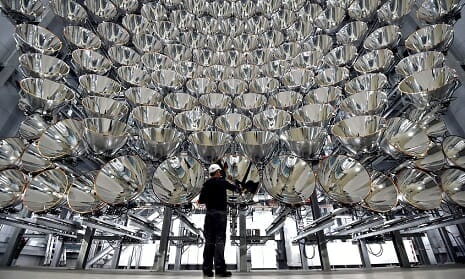Hydrogen, the first element of the periodic table, plays a pivotal role in numerous applications that impact our daily lives. One of its most notable uses is producing ammonia through the Haber process, essential for creating fertilizers. These fertilizers are crucial for modern agriculture, helping to enhance crop yields and ensure food security for a growing global population. Moreover, hydrogen is increasingly being recognized as a clean energy carrier. It can power fuel cells that generate electricity, emitting only water vapor as a byproduct. This characteristic positions hydrogen as a promising alternative to fossil fuels, offering a path toward a more sustainable energy future.
In addition to energy production and agriculture, the first element of the periodic table is also vital in space exploration. Liquid hydrogen is a powerful rocket fuel in many launch systems to propel spacecraft beyond Earth’s atmosphere. Its high energy content and lightweight nature make it an ideal candidate for this purpose. Furthermore, hydrogen is utilized in manufacturing various materials, including plastics and electronics, showcasing its versatility across industries. As research expands on hydrogen’s potential, its applications in clean energy and various sectors are only expected to grow, solidifying its importance in modern society.

1. Hydrogen as a Fuel Source
Hydrogen, known as the first element of the periodic table, holds immense potential as a clean fuel source that can revolutionize energy production. Hydrogen fuel cells generate electricity by combining hydrogen and oxygen, producing only water vapor as a byproduct. This process starkly contrasts traditional fossil fuels, which release harmful pollutants and greenhouse gases into the atmosphere. As the world faces the urgent challenge of climate change, hydrogen fuel cells present an attractive alternative, supporting the transition to sustainable energy solutions that can help mitigate the environmental impact of energy consumption.
The advantages of hydrogen fuel over traditional fossil fuels are manifold. Firstly, hydrogen is abundant and can be produced from various resources, including water, natural gas, and biomass, reducing reliance on finite fossil fuel reserves. Secondly, hydrogen fuel cells operate more efficiently than internal combustion engines, converting more of the energy stored in hydrogen into usable power. This efficiency, combined with the clean emissions profile of hydrogen, positions it as a key player in the quest for a sustainable energy future. As society seeks innovative ways to reduce carbon footprints and embrace renewable energy sources, the adoption of hydrogen fuel technologies continues to gain traction globally.
2. Hydrogen in Industrial Processes
Hydrogen, recognized as the first element of the periodic table, plays a crucial role in various industrial processes, particularly in chemical manufacturing. Its versatility allows it to serve as a fundamental reactant in ammonia production through the Haber-Bosch process, which is vital for fertilizer synthesis. Additionally, hydrogen is integral in producing methanol, a building block for numerous chemicals and fuels. The ability of hydrogen to participate in reduction reactions makes it an essential component in the synthesis of organic compounds, thereby facilitating the growth of the chemical industry and contributing to advancements in sustainable practices.
In refining processes, the first element of the periodic table is utilized primarily as a reducing agent and in hydrocracking applications. Hydrogen is essential for removing impurities from crude oil and upgrading heavier fractions to produce lighter, more valuable fuels. Hydrotreating, which involves the addition of hydrogen to remove sulfur and nitrogen compounds, enhances the quality of petroleum products, making them more environmentally friendly. As the demand for cleaner fuels rises, the role of hydrogen in refining processes becomes increasingly significant, underscoring its importance in the transition towards more sustainable industrial practices.
3. Hydrogen in Transportation
Hydrogen, the first element of the periodic table, is emerging as a promising alternative to traditional fossil fuels in the transportation sector. Hydrogen-powered vehicles, including fuel cell electric vehicles (FCEVs), utilize hydrogen gas to generate electricity, emitting only water vapor as a byproduct. This makes them an environmentally friendly option, significantly reducing greenhouse gas emissions and air pollutants compared to conventional gasoline or diesel vehicles. As the urgency to combat climate change grows, adopting hydrogen-powered vehicles presents a viable pathway toward achieving cleaner urban air quality and reducing our carbon footprint, aligning with global sustainability goals.
However, the widespread adoption of hydrogen-powered vehicles faces significant infrastructure challenges, particularly in developing hydrogen fueling stations. Currently, the network of refueling stations is limited, which hampers the practicality of using hydrogen vehicles for everyday consumers. To overcome these obstacles, advancements in hydrogen infrastructure are crucial, including investments in production, distribution, and storage technologies. Governments and private sectors are collaborating to expand the hydrogen fueling network, making it more accessible and convenient for users. As these advancements continue, the potential for hydrogen, the first element of the periodic table, to transform the transportation landscape becomes increasingly tangible, promising a cleaner and more sustainable future.
4. Hydrogen in Space Exploration
Hydrogen, the first element of the periodic table, plays a pivotal role in space exploration, primarily as a rocket fuel. Its lightness and high energy content make it ideal for launching spacecraft beyond Earth’s atmosphere. When combined with oxygen in liquid form, hydrogen produces a powerful propellant that generates significant thrust, enabling rockets to break free from gravitational pull. This combination, often called liquid hydrogen and liquid oxygen (LH2/LOX), has been successfully utilized in historic missions, including the Space Shuttle program and the Saturn V rocket, which propelled humans to the Moon. The efficiency and power of hydrogen fuel have made it a staple in the aerospace industry, driving advancements in rocket technology.
Beyond its function as a fuel, hydrogen’s importance in powering spacecraft extends to its versatility in various forms of propulsion. It can be employed in fuel cells, which convert chemical energy directly into electrical energy, providing a sustainable power source for space missions. This capability is crucial for long-duration missions, such as those to Mars, where solar energy may be limited. Furthermore, hydrogen is abundant in the universe as the first element of the periodic table, making it a prime candidate for in-situ resource utilization. This means that future missions could extract hydrogen from other celestial bodies, reducing the need to carry all fuel from Earth. The ongoing research into hydrogen’s applications in space exploration continues to highlight its significance in exploring deeper into our solar system and beyond.
5. Hydrogen in Food Production
Hydrogen plays a pivotal role in the food production industry, particularly through the hydrogenation process. This chemical reaction involves the addition of hydrogen, the first element of the periodic table, to unsaturated fats and oils, converting them into saturated fats. This transformation enhances the texture and stability of various food products and extends their shelf life. Hydrogenation is commonly used to produce and shorten margarine, which helps achieve the desired consistency while reducing the likelihood of rancidity. Hydrogenation contributes significantly to the overall quality and longevity of processed foods by modifying the chemical structure of fats.
In addition to its role in hydrogenation, hydrogen’s contributions to food preservation techniques cannot be understated. Hydrogen gas has been explored as a potential method for creating modified atmosphere packaging (MAP), which involves altering the composition of gases surrounding food products to slow spoilage. The use of hydrogen in this context can help maintain freshness and reduce the growth of aerobic bacteria, thereby prolonging shelf life. As the first element of the periodic table, hydrogen’s unique properties make it an essential component in various innovative preservation methods, ensuring that food remains safe and appealing for consumers while minimizing waste in the food supply chain.
Concluding Remarks: The First Element of the Periodic Table
In conclusion, the first element of the periodic table, hydrogen, is fundamental to the structure of matter and a vital resource in numerous industries. Its application in energy production, particularly through hydrogen fuel cells, showcases its potential to provide clean and renewable energy solutions. As the world increasingly shifts towards sustainable alternatives, harnessing hydrogen’s energy capabilities could significantly reduce our reliance on fossil fuels and decrease greenhouse gas emissions. This transformation is essential for addressing the pressing challenges of climate change and environmental degradation.
Moreover, the versatility of the first element of the periodic table extends beyond energy. In the food industry, hydrogen is utilized in processes such as hydrogenation, which helps preserve food products and enhances their shelf life. Its role in chemical reactions and manufacturing processes further underscores its importance in various sectors, including pharmaceuticals and agriculture. By recognizing the diverse applications of hydrogen, we can appreciate its significance in fostering innovation and sustainability, ultimately contributing to a more resilient future for our planet.












